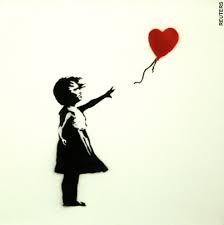A lot of writers will end an emotional arc at stage 4, with the main character confronting and then defeating the mean evil dude, tag on a quick conclusion and call it a victory. An ending like this is exciting and something we know and anticipate as readers. It’s also a technique that’s handy for carrying your emotional arc through a book series until its resolution in the final installment. For more on stages 1-4, see my earlier post.
As difficult as it is to leave Harry Potter aside, let’s pick up where we left off running through the 8 stages in clearing emotional trauma. (1) Something happened that (2) angers our character and makes her feel threatened, so she (3) takes her anger out on other people – blaming them, because if it weren’t for them she wouldn’t feel like she does now. (4) She gets so angry that she works up the courage to confront the person who did her wrong and battles them. Maybe she raises her voice, maybe she swears, maybe she even goes ninja on the villain! Now the dust settles and she’s standing amid the aftermath of stage 4. Where does she go from here?
5. Finding the mirror
Up until now, our character’s anger has motivated her to seek retribution and justice. Her most natural human reaction now would be to justify her actions by believing that she’s right, that she’s in the right, that she has the right, that the other is just plain wrong. She's trounced the villain and now some might already call her a hero, but not me. I want her to inspire our readers, so we dare her to reach stage five and look beyond her own self and consider that the villain may not be a one-dimensional evil force but rather a more complex character with his own set of values and fears. Before I'll call her a hero, she needs to learn from this experience and bring back some wisdom.She’s ready to learn. Now that she’s released the pressure valve on her anger, she is calm enough to engage in some logical and perceptive thinking. She pulls in the reigns on blaming and projection and begins to see how she may have co-created the situation.
Can you see why most characters screech to a halt before they’ve reached stage 5? Finding the mirror is hard! Finding the mirror requires a certain amount of psychological and emotional maturity from your character. She must be able to look for the life lesson in what happened and begin to appreciate the role the villain played in teaching her that lesson.
**NOTE: In exploring this stage of finding the mirror, you might notice that your character has sadistic fantasies about exploiting the villain’s vulnerabilities and finding sick and depraved ways to cause the villain further pain and suffering. This fantasy behavior is Totally. Perfectly. Natural. Enjoy it and move on.
6. Recognizing the reflection
If you’re like me, then your life is basically a soundtrack. Memories and ideas stir up lyrics to songs. The song evoked at this stage 6 of emotional clearing is a no-brainer. Before you start moonwalking and waving around a sequined glove, take a moment to appreciate that something magical happens before that Michael Jackson “Man in the Mirror” moment.
Maybe your character sees the villain as selfish, quick-tempered, untrustworthy, or manipulative. Superimposing their reflections, your character has the opportunity to see that the villain is reflecting or mirroring back an aspect of herself. She too can be selfish, quick-tempered, untrustworthy, or manipulative. I'll go so far as to call her a hero if she can now sees that she has done the same thing that she judged the villain for doing.
Powerful, eh? Damn straight. Wait, there’s more. When your character’s anger crumbles it brings a delightful chaser of empathy and sadness because she understands first-hand, the fear that drives both her and the villain to that behavior.
Sit with that a moment. Your character the hero looks in the mirror and sees the villain and her own image superimposed. Your hero and your villain are one and the same. Chilling. If you’re inclined to write like Edgar Allen Poe, maybe you want to stop here. Let your character suffer a mental breakdown, convincing herself that she will never ever get out of this endless loop of pain. Allow her to be haunted by the sound of her own beating heart.
"I became insane, with long intervals of horrible sanity." ~ Edgar Allan Poe (1809-1849)
Or, you can move on to stage 7.
7. Forgiveness
If your character is anything like me, I’m basically in shock in stage 6 when I see how the villain is mirroring back my own bad behavior. Then I move into feeling awful about myself at the start of stage 7. Now, the only thing that’s going to see me through and inspire others to take this journey is finding my way to forgiveness. Here’s how it’s done.Her next step is to ask, “What am I afraid of?” Let her spill her guts and talk about all the things she’s afraid of. A pattern will emerge that will point to a common theme in the things she says about herself, others, and the world.
This theme highlights your character’s false core belief. It developed over time, usually from childhood and is influenced by significant life events and particular life circumstances. A core belief is always an “I” statement, as in “I am unworthy.” She will hold onto this core-belief with a vise grip. A belief “Nobody will choose me” is called a supporting belief and it is a prediction about what others will do or have done. Her way of interpreting other people’s reactions gives the core belief the appearance of being true and it becomes a self-fulfilling prophecy.
Your character is going to recognize how she has self-sabotaged by focusing on information that supports her belief and ignoring evidence that contradicts it. More, she is going to realize that her (and the villain’s) core belief is false and she is going to begin to understand and forgive herself for acting out in defense of that untrue core belief.
 8. Letting go & moving on
8. Letting go & moving on
No surprise, core beliefs are hard to change. However, your character kicks ass and she’s going to do just that. She’s made it through 7 difficult stages of clearing her emotional trauma and she is not about to backslide now. She is going to shatter the illusion of the core belief and uncover the truth, which will be a statement completely opposite from her false core belief; in this instance, “I am unworthy” shifts to “I am worthy.” And she’ll reinforce this new positive core belief with evidence and information.
At this point, there’s a tangible shift. All those emotions your character felt, the anger, pain, blame, empathy and sadness transmute to appreciation and gratitude for the villain. Realizing the powerful gift brought by the villain in this encounter, your character can at last release him. She may even feel compassion for the villain and be able to apologize and validate his pain.
Now, when your character looks in the mirror, the glass is clear and she sees only herself. True, strong, wise. Totally worthy. Mirror mirror on the wall, she is the most inspiring kick-ass character of them all. Seriously! She’s cleared emotional trauma. The conflict is over.
Bonus – there’s more trust in her relationships because she’s able to work through conflicts when they arise rather than run away.
Summary
So, there you have it. Three blogs and an exercise giving you my take on creating an emotional arc using anger. In case you missed my first post, here are the eight stages in one handy list:
The 8 Stages
1. The
smoking gun
2. Anger
3.
Projection and blaming
4. Expressing
anger and releasing pain
5. Finding
the mirror
6.
Recognizing the reflection
7. Forgiveness
8.
Letting go and moving on
Most
of the time, we go through these stages intuitively. These are the times when
the smoking gun isn't aimed at us, or it misses its target, or our shields are
solid enough to protect us. Other times, the bullet hits its target and we
are hurt enough to get angry.
Anger
is an energetic signal that you are ready to make a change. How you
want to make that change is a mental decision. It involves calculating the
variables between changing the other person (doesn't work), changing the
situation (might work), or changing something about yourself (worth a try).
When
a person in real-life or a character in a novel is brave enough to work through
their anger and change a core belief about themselves they are, in my
opinion, the most inspiring kick-ass character of them all.
Let
me know what you think about this post series, and if there are other ideas
you’d like to explore with me. I’d love to hear from you!












